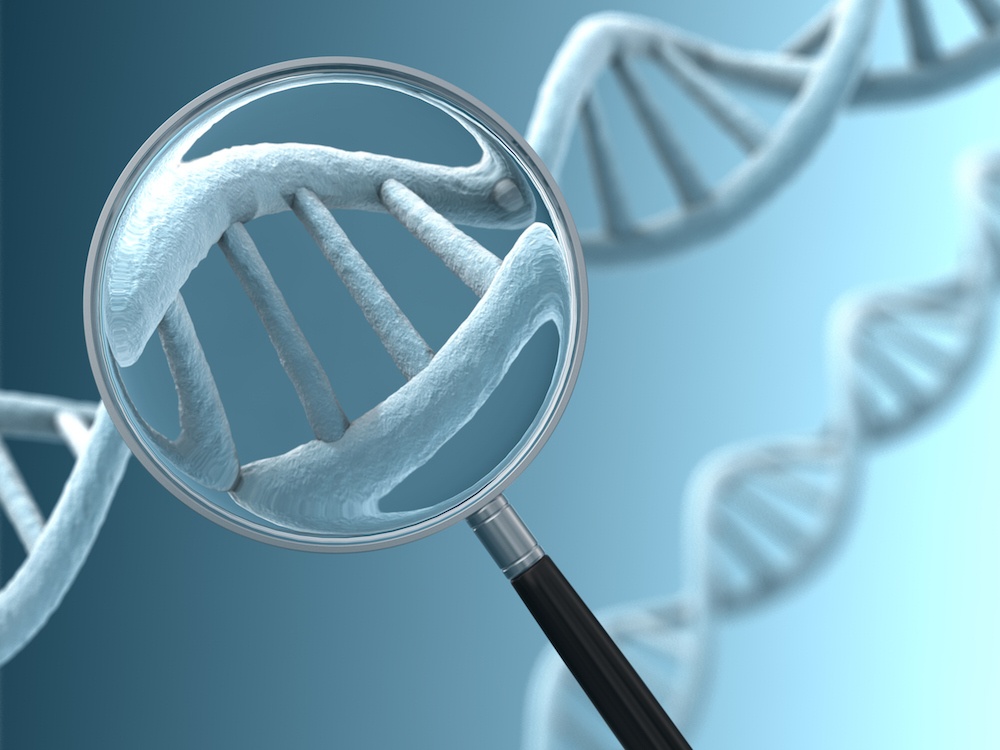
Gene therapy has become an area of interest in treating diseases such as sickle cell, cancer, blindness, AIDS, and more. At the forefront of these genetic editing tools is CRISPR-Cas9, which was first described to modify genes in 2012. CRISPR (clustered regularly interspaced short palindromic repeats) refers to a family of DNA sequences originating in bacterial genomes. Bacteria use this CRISPR-Cas9 system to defend themselves against infection by viruses. After detecting the presence of viral DNA, the bacterium creates two short RNA sequences, one of which matching the viral genetic material (known as the guide RNA). These RNA sequences then form a complex with the Cas9 enzyme, which functions to cut DNA and is often referred to as “genetic scissors”. Once the guide RNA finds the specific sequence it is looking for in the viral genome, the Cas9 cuts this viral DNA to disable the virus.
Researchers have realized that this system can be used to not only edit viral DNA, but any DNA sequence. By changing the guide RNA’s sequence to match that of specific gene, scientists can effectively target desired genes with the Cas9 cutting enzyme. After this enzyme has cut out the area of interest, researchers can simply leave this gene removed or replace it with a healthy copy of the gene. By removing a mutant gene, like the one that causes sickle cell, and replacing it with a healthy copy, CRISPR-Cas9 could potentially treat a multitude of genetic disorders. CRISPR technology has also been used to rapidly and accurately scan genomes to identify specific genes and mutations as well.
In this article, DocWire News has compiled the top stories regarding novel uses of the CRISPR gene editing technology. This edition includes quickly detecting genetic mutations, curing disease, malaria, deafness and more. Read below and stay tuned for more on this exciting topic.
CRISPR-Chip Accurately Detecting Genetic Mutations in Minutes
Engineers from the UC Berkeley and the Keck Graduate Institute (KGI) of The Claremont Colleges have recently used CRISPR to create a sensor that detects specific genetic mutations in minutes. The researchers are calling the device CRISPR-Chip, and feel that it could potentially provide rapid diagnosis of genetic diseases, or evaluate accuracy of genetic editing efforts.
CRISPR-cas gene-editing as plausible treatment of neuromuscular and nucleotide-repeat-expansion diseases: A systematic review
The system of CRISPR and CRISPR-associated proteins (Cas) is a new technology that allows easier manipulation of the genome. Its potential to edit genes opened a new door in treatment development for incurable neurological monogenic diseases (NMGDs). The aim of this systematic review was to summarize the findings on the current development of CRISPR-cas for therapeutic purposes in the most frequent NMGDs and provide critical assessment.
UK Researchers Use CRISPR Genome Editing to Eliminate Malaria in Study
A group of researchers from Imperial College in London have recently conducted a study in which CRISPR-Cas9 genomic editing was used to eliminate malaria-infected mosquitoes. In their findings published in Nature Biotechnology, scientists were able to eradicate a controlled population of mosquitoes in as few as 7 reproductive generations. The project was funded in part by the Bill and Melinda Gates Foundation, the UK’s Biotechnology and Biological Sciences Research Council, and the Massachusetts General Hospital program.
Researchers Use Gene Therapy to Treat Deafness in Animal Model
Gene therapy has recently been used to restore hearing in a mouse model of deafness that represents one of the most common genetic causes of the condition. Referred to as DFNB9 deafness, the condition results in a deficiency in the gene coding for otoferlin, a protein with a key role in transmitting signals at the synapses of auditory sensory cells. By administering an intracochlear injection of this gene to model animals, the researchers found that auditory neural activity and hearing functions were restored to a near-normal level.
Novel CRISPR-Cas3 Genetic Editing Holds Potential in Curing Disease
A new gene editing system, called CRISPR-Cas3 has been developed by a group of researchers that that can erase long DNA stretches from sites in the human genome. This is a capability that is not easily accomplished through traditional CRISPR-Cas9 systems. This new approach to genetic editing has the capability to find and erase ectopic viruses such as herpes simplex, hepatitis B, and Epstein-Barr, each poses significant detriments to health. These findings were published in a paper on April 8 in the journal Molecular Cell.







 © 2025 Mashup Media, LLC, a Formedics Property. All Rights Reserved.
© 2025 Mashup Media, LLC, a Formedics Property. All Rights Reserved.